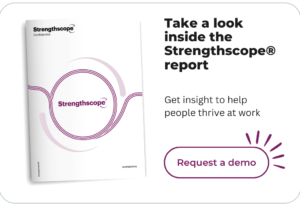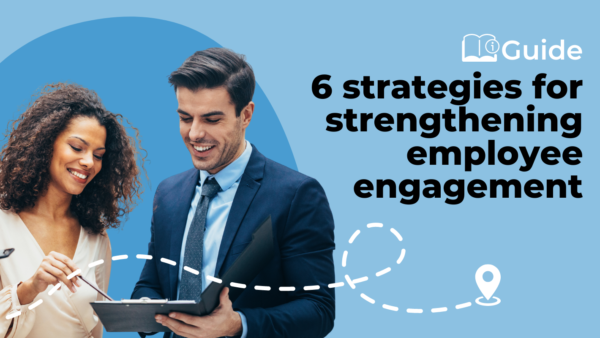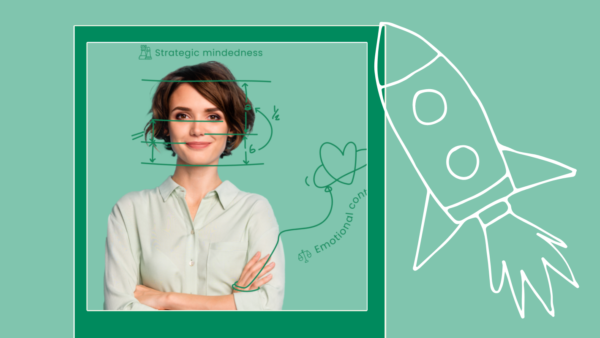Now is a good time to focus on your wellbeing.
One of the central pillars of you feeling well is to connect with other humans. We’re social animals and the last few months have been particularly challenging in terms of how to connect socially with people when much of our interaction is through screens or other technology. The rules on social distancing tell us to be careful about physical proximity (like hugs and kisses and touch) and even when we’re in the presence of others we may be wearing a face-covering reducing our ability to connect well. It’s important for our wellbeing and for the wellbeing of others, that we make the effort to do it, because the payback is huge.
My name’s Dr Paul Brewerton, founder of Strengthscope and Doctor of Psychology. For 25 years, I’ve been helping people to better understand how we humans can get the very most from work and from life. My podcasts are published every Monday to set you up for a strong week ahead. There’s a mix of observations, tips and curated research to bring the best of what positive psychology and the world of strengths have to offer.
My 5 top tips for connecting with your fellow humans, even when that’s made more challenging by pandemic-related rules, are to:
- Listen
- Be curious
- Be present
- Be you
- Smile
Listen
When I say listen you may already know that there are different levels of listening. There are a lot of models out there to illustrate this and they all have the same basic principles. I want to give you the simplest of all, which is a 3 level model.
Level 1 is internal listening. This is where you are listening to someone, really only, to relate what they say to your own world and respond with your views and opinion. Conversational listening if you like. There’s nothing bad about it, but it only provides you with a Level 1 connection.
The next level of listening is listening to understand. This is where you’re not thinking about you and your world but instead you’re focused on the person you’re with. At this level you’re not distracted by your own thoughts and feelings, you’re empathising because you’re able to see the world through the eyes of the other person. Level 2 listening gives you a pretty powerful connection because you’re understanding the other person in a them-centred way.
You might now be wondering what Level 3 connection is because Level 2 sounded pretty intense. Level 3 is like a Vulcan mind-meld right? Like telepathic thought-reading? Well no, not exactly, Level 3 listening is global listening. Meaning that you’re listening between the lines, seeing the whole picture, noticing patterns in what the other person says, picking up on body language (yes that’s possible even through a screen) and actually hearing it when someone says ‘well, it’s not really what I mean, but…’ (when it’s exactly what they mean but they didn’t quite know how to say it diplomatically). This is global listening because you’re paying attention not just to the content of what someone is saying but the WAY they’re saying it.
So my supercharge tip number 1 is to listen well and know the level of listening you’re at. If you want to gain maximum well-being benefit, for you and for the person you’re connecting with, listen at Levels 2 and 3 more of the time.
Be curious
Tip 2 is to be curious – ask questions, be interested. Of course, this goes alongside listening well and helps you to discover more about how the person you’re speaking to feels about things. It needs you to suspend judgement and sidestep your own experience some of the time so that you can enquire as to their experience, not necessarily how it relates to yours.
When you show that interest, that curiosity (and by the way I have some more tips on how to be curious without being weird in my podcast at season 4, episode 8) the person you’re speaking to will feel heard and understood. That will evoke a whole range of positive emotions and create a feeling of psychological safety for them, leading to a yet deeper level of connection.
When you’re asking questions, do try and remember what the other person is telling you. Then, when you pick up on the last conversation, you can actually recall some or all of those details. It can feel like a bit of a balloon burst moment when someone you felt you had a deep conversation with has forgotten what you talked about the next time you meet. It happens, of course, we’re all human, we’re not automatically recording each conversation for later reference but it’s great if you can practice keeping some of the most salient details in your memory banks.
Be present
Tip 3 is essential if you’re going to listen well and be curious. It’s to be present and show that you’re present. This is always an issue in a world so crammed full of distractions, primarily being channeled through your phone. But let’s be honest, there’s always something else to look at or think about or be distracted by. The thing is, it’s going to make the other person feel much less connected and you will probably pick up on that when you bring yourself back to full attention. You may lose that level of listening, question-asking and connection that you were building.
Being present is further complicated by the increased use of meeting tech through your phone or laptop meaning distractions are even easier to come by. Notifications, an email that you might decide to write in the middle of a meeting which you think can’t really be noticed by the other person (it can). So my supercharge tip here is to be present by continuing to focus your attention on the other person and if you do get distracted, say that’s what’s happening because that’s better than pretending not to be when you actually are.
Also, a thing to say about meeting technology here. One to one, full face Zoom meetings can actually give you a LOT of body language info (facial expressions, tone of voice, pauses, etc.) with a lot fewer distractions than physical meetings – as long as you stay attentive. It’s easy to say, not so easy to do.
My supercharge tip for maintaining focus for long periods is to develop a meditation practice because that’s one of the major benefits of meditation. Plus, it has all its own well-being benefits too. More on that in my podcast – What meditation did for me (insert hyperlink) Season 4, episode 9. But even if you don’t meditate, tip 3 is be present.
Be you
Tip 4 is to be authentic. Be you, unapologetically and completely. Show yourself, your passions, your interests because that will help others to connect with you at a deeper level. Your level of disclosure will be mirrored by theirs, so be you and don’t worry about that not being ok. It is. Always. You are enough, as you are.
BTW, levels of comfort with disclosure are worth a mention here. Not everyone wants to share (I know this because I have a tendency to want to share and not everyone appreciates it) so do whatever you need to do to be authentically you. This includes letting another person know that you’re actually not much of a sharer until you really get to know someone, or that you like to keep personal and work life separate. That’s all ok and that’s being authentic.
Smile
Finally, the simplest of all my tips today is to smile.
Smiling releases neuropeptides that increase your brain’s efficiency and reduces stress. Smiling also releases the neurotransmitters dopamine, endorphins and serotonin which relax your body and lower heart rate and blood pressure for some people. Endorphins are the body’s natural painkillers so smiling also reduces pain – probably not if you break your leg but just saying. Serotonin improves mood and can alleviate symptoms of depression.
Smiling also has a reciprocal consequence, smiles are infectious. Someone you’re in contact with when you smile is likely to smile back so you both feel more connected at the same time. In short, smiling rocks!
Those are my supercharge tips to help you improve your well-being by increasing human social connection. Even if you take on board only one or two things and make them habits, over time, you’ll find that you’re opening up parts of your brain and experience of the day-to-day that may not have had an outing for a while. Physiologically, emotionally and neurologically there are many reasons why social connection will bring you and others benefit. So please give some of the tips a go and let me know how you get on, I’m always happy to hear your feedback.
Till next time, get yourself connected.
This podcast is available on all major podcast platforms. Find it on Apple podcasts, Spotify, Google podcasts, Stitcher, ACast, TuneIn, Breaker and Soundcloud. Make sure to check out the back catalogue and subscribe to get them at the start of the working week!










